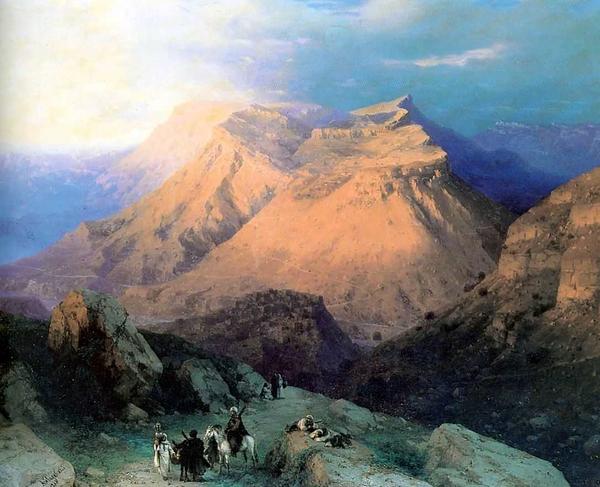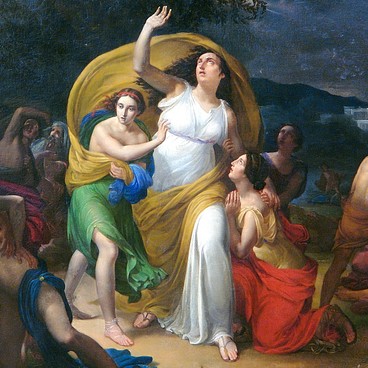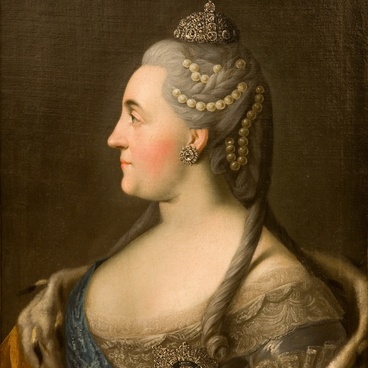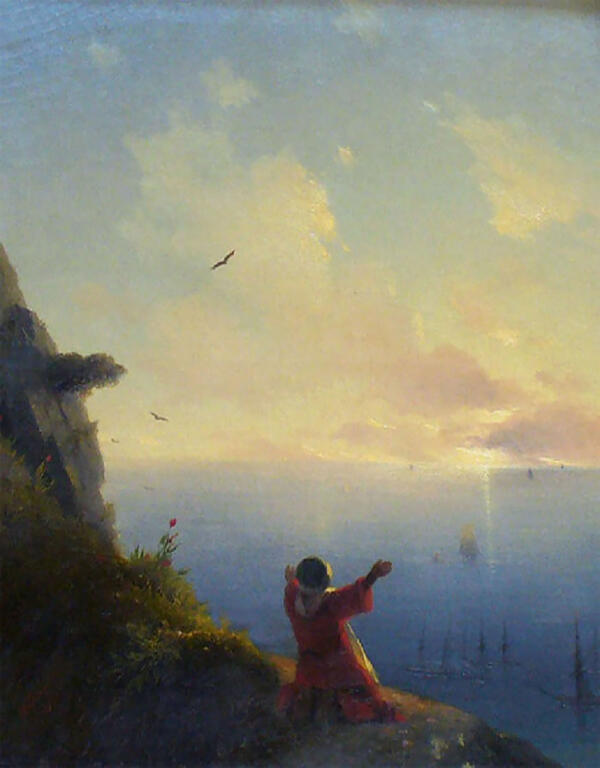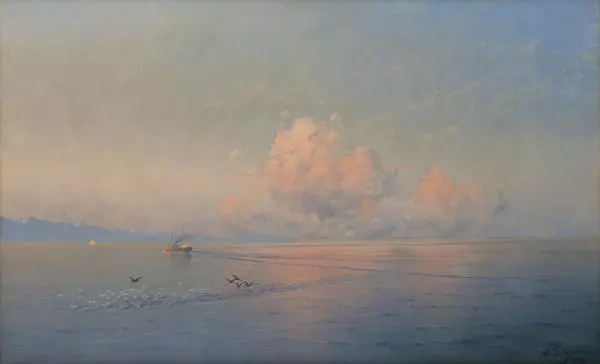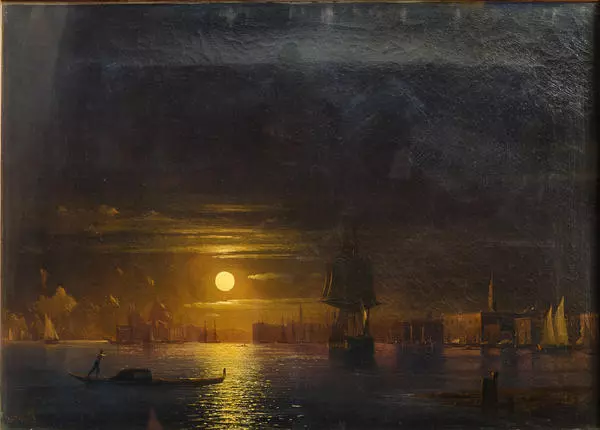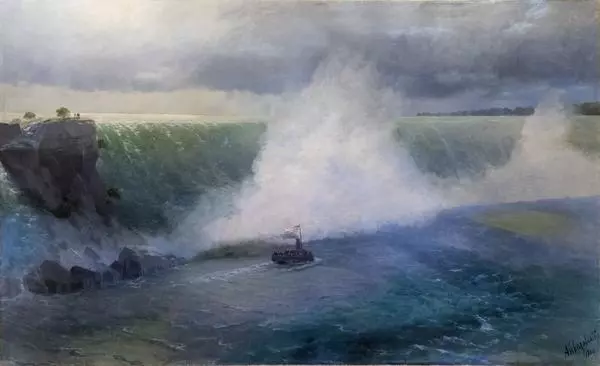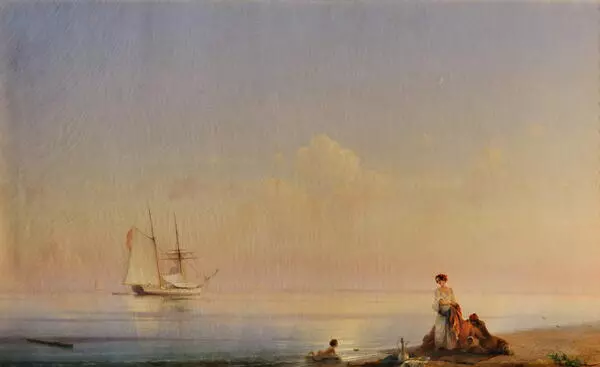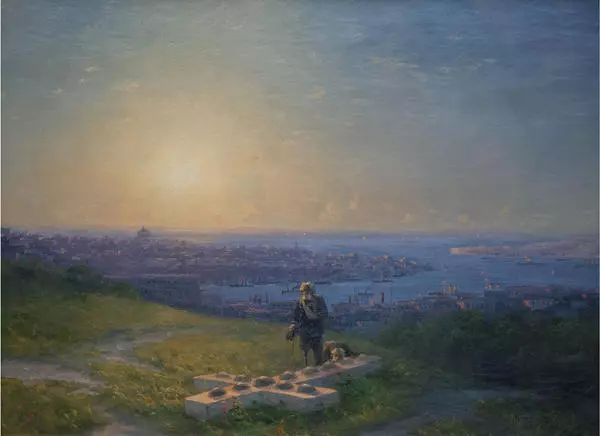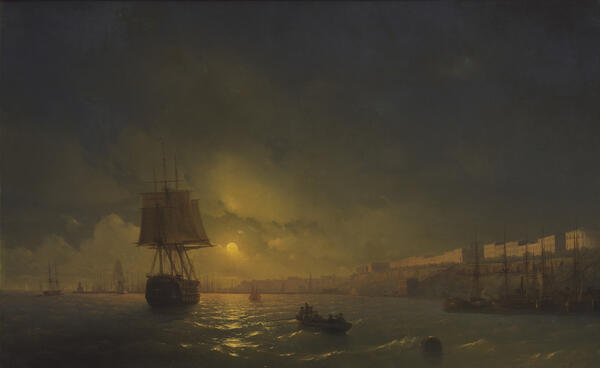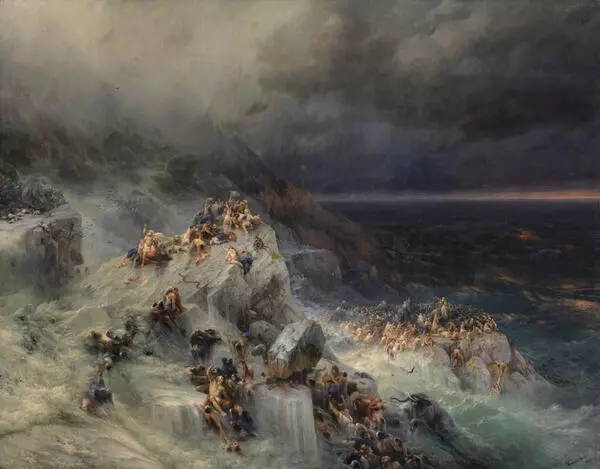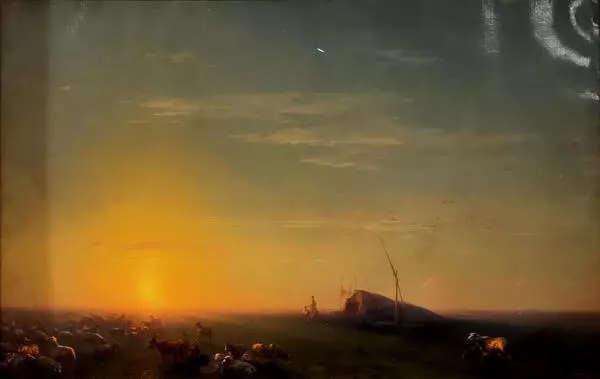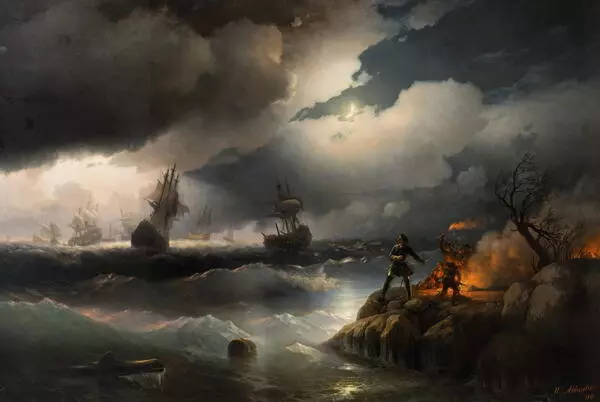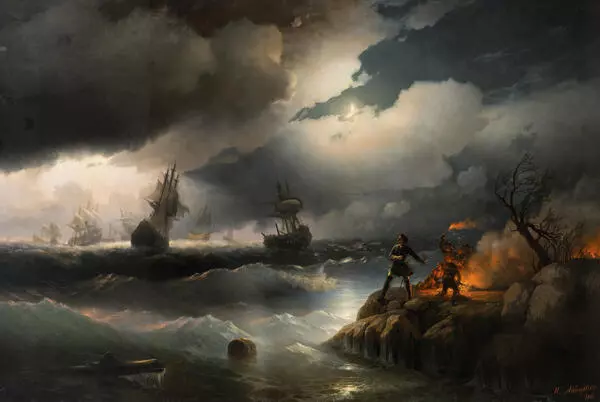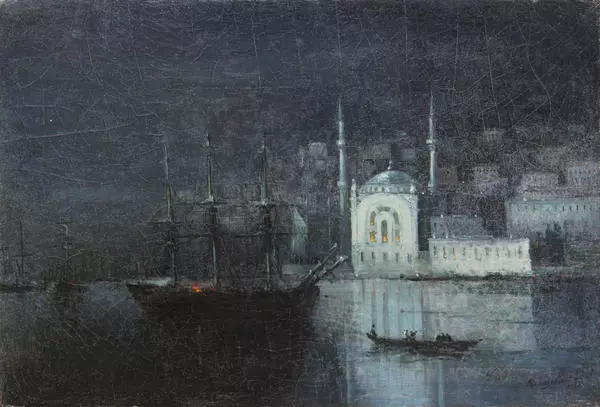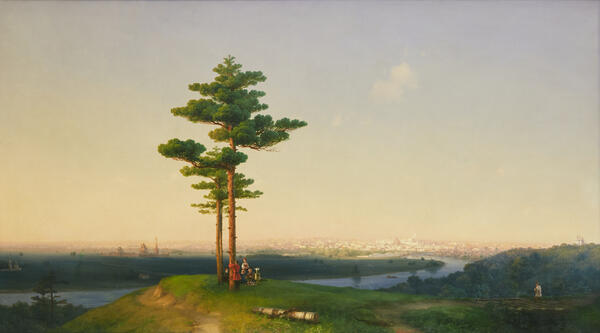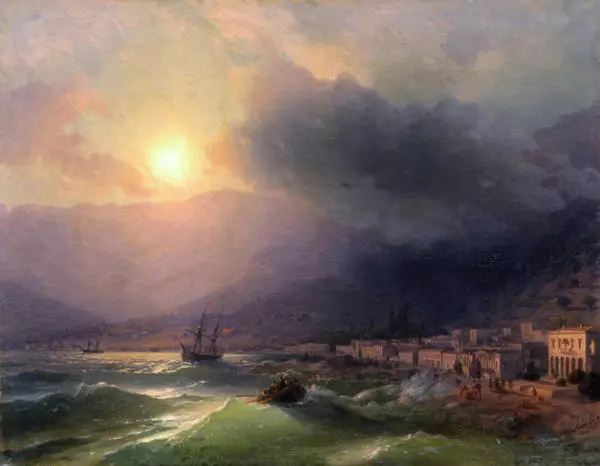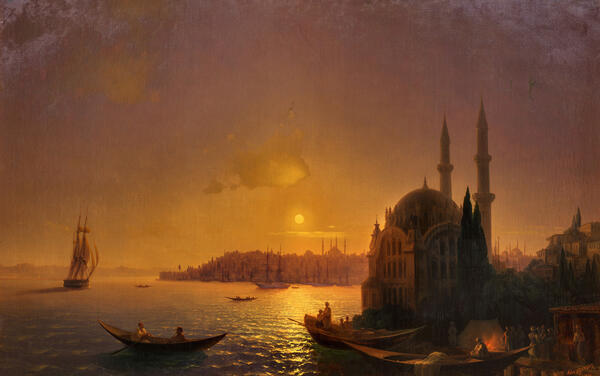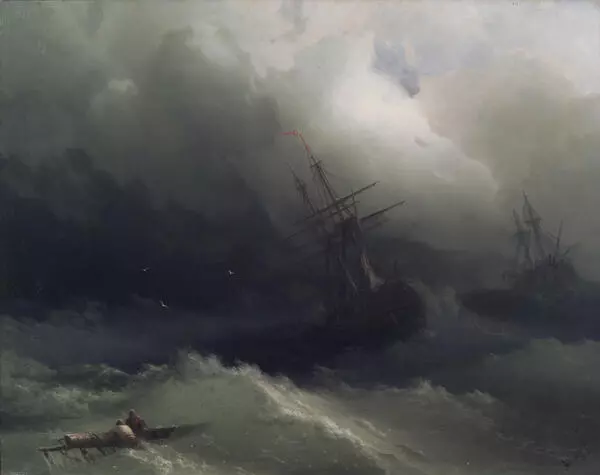Ivan Aivazovsky painted ‘View from Karanai Mountains on Temir-Khan-Shura and the Caspian’ in 1869. He saw this panoramic view from a mountain ridge in the Caucasus. The subject of the painting is related to the Caucasus war in the area in 1817-1864. The village of Temir-Khan-Shura was in the center of hostilities and horse and foot soldiers were constantly moving along mountain passes. But the painter’s focus was not on battle scenes. He showed a mountain ridge covered in low clouds and shapes of the Caspian Sea in the haze.
He created “View from Karanai Mountains” during his voyage to the Caucasus in 1868-1869. The painter did not paint from life but reconstructed his paintings from memory using sketches. During that voyage he made sketches in his sketchbook that survived until today. It reflected the progress of the painter’s creative method: while in the 40’s he made detailed drawings and transferred them to canvas almost unchanged, by 1868 a few general sketches and notes on the margins were sufficient for him.
After a long trip the painter stayed in Tiflis (now the city of Tbilisi) for the winter where he set up a studio. Soviet fine art expert Lev Vagner wrote in his book: “Everybody in Tiflis knew that the painter was painting views of the Caucasus. It was discussed not only in the homes of cultured people but on every street, in every wine pub where the regulars argued, made bets, told fantastic anecdotes. Almost all the arguments and anecdotes were about the speed with which he painted. And that winter he was truly working especially fast. In a short time he painted twelve paintings”. The speed of Aivazovsky’s work was always legendary. They say that once at a dinner party he gave to each guest a gift of a little seascape — and the party numbered 150 guests.
He created “View from Karanai Mountains” during his voyage to the Caucasus in 1868-1869. The painter did not paint from life but reconstructed his paintings from memory using sketches. During that voyage he made sketches in his sketchbook that survived until today. It reflected the progress of the painter’s creative method: while in the 40’s he made detailed drawings and transferred them to canvas almost unchanged, by 1868 a few general sketches and notes on the margins were sufficient for him.
After a long trip the painter stayed in Tiflis (now the city of Tbilisi) for the winter where he set up a studio. Soviet fine art expert Lev Vagner wrote in his book: “Everybody in Tiflis knew that the painter was painting views of the Caucasus. It was discussed not only in the homes of cultured people but on every street, in every wine pub where the regulars argued, made bets, told fantastic anecdotes. Almost all the arguments and anecdotes were about the speed with which he painted. And that winter he was truly working especially fast. In a short time he painted twelve paintings”. The speed of Aivazovsky’s work was always legendary. They say that once at a dinner party he gave to each guest a gift of a little seascape — and the party numbered 150 guests.
Having finished the work on Caucasus paintings, Aivazovsky held an exhibition in Tiflis. The entry fee was quite steep, but people’s curiosity was even bigger: big crowds came to see “East Shore near Sukhum”, “Gunib from the East”, “View of Tiflis”. The author, having collected a hefty sum of money, donated it to the city orphanage.Having finished the work on Caucasus paintings, Aivazovsky held an exhibition in Tiflis. The entry fee was quite steep, but people’s curiosity was even bigger: big crowds came to see ‘East Shore near Sukhum’, ‘Gunib from the East’, ‘View of Tiflis’. The author, having collected a hefty sum of money, donated it to the city orphanage.


